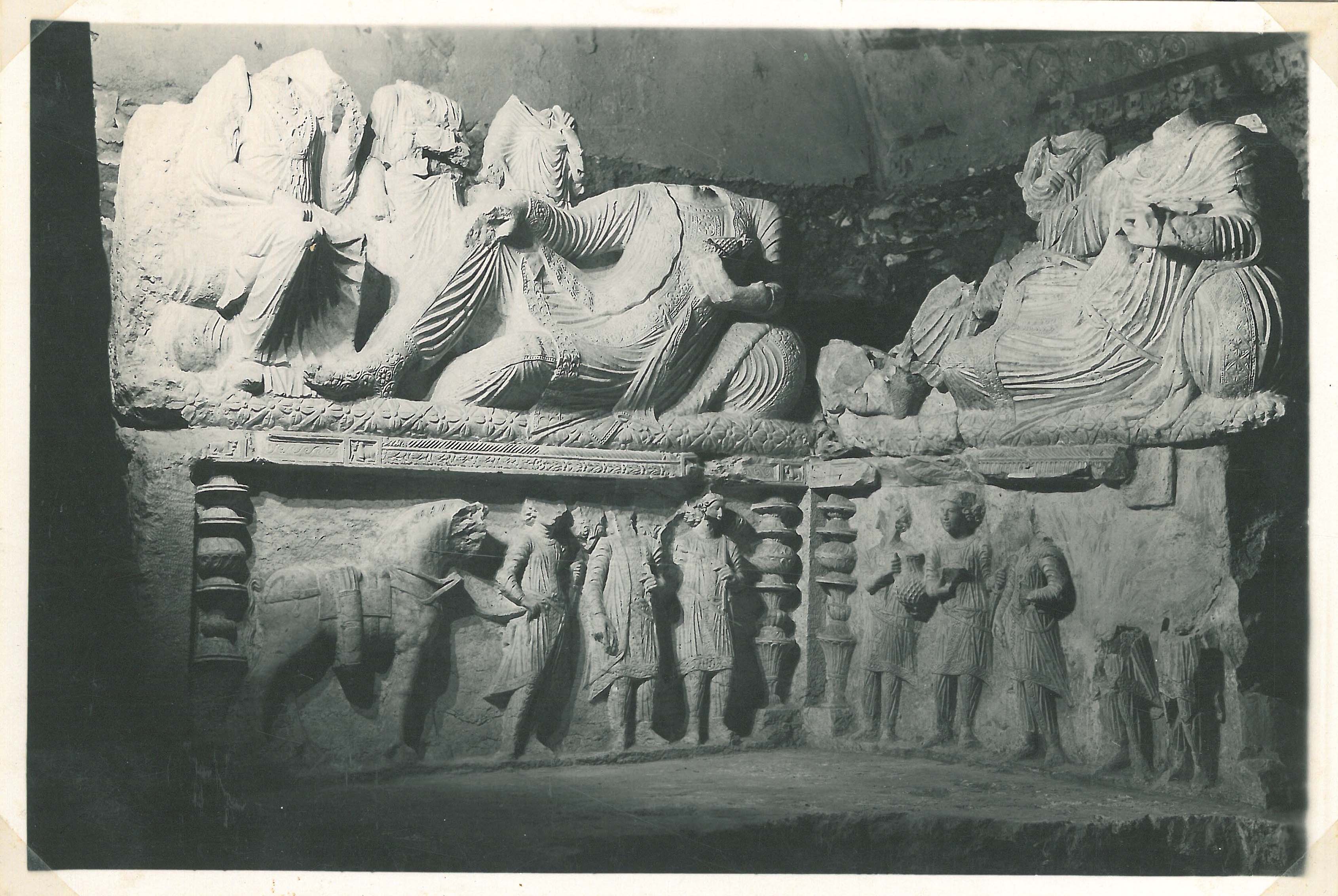The cultural heritage of Palmyra will be explored through the records of Ingholt in a new research project
Funded by ALIPH, a new research project about Palmyra’s damaged and lost cultural heritage is initiated this January. Archive material held at the Ny Carlsberg Glyptotek will be explored, and it will become possible to recontextualise and recreate artefact assemblages affected by the war in Syria.

Palmyra and the Syrian conflict
The Syrian conflict has caused great suffering to the Syrian people. Also the rich cultural heritage of the country has suffered severe damage. The renowned site of Palmyra in the Syrian Desert has been gravely damaged during the conflict. The site was torn between parties with different interests, and in 2015 it became a pivotal location for strives between the state troops and ISIS groups, leading to an intensification in the destruction of monuments and looting of the site.
While the situation in Syria remains first and foremost one of the most detrimental humanitarian catastrophes of our time, it also carries with it profound implications for the future of the country and its cultural heritage. It will be impossible to recover and trace the exact amount of damage done to the Syrian cultural heritage overall. However, through targeted research projects focusing on previously documented finds, we might recover some important information. One way to gain insight into parts of the cultural heritage, which has been overlooked in the past, is to turn to archive material and reconstruct what has been lost through such archival records.
This is what the new research project Archive Archaeology: Preserving and Sharing Palmyra’s Cultural Heritage through Harald Ingholt’s Digital Archives will do. The project members will explore lost and damaged contexts of Palmyra through the archive and diaries of Harald Ingholt. His until now unpublished finding will be documented in detail. The project will run for two and half years, beginning in January 2020.
Ingholt’s archive and diaries
Harald Ingholt excavated in Palmyra and studied Palmyrene art all his life. His photographic archive with documentation images and notes on objects is an invaluable source of information. In addition, his diaries contain precise information about his excavations and his finds. The archive as well as the diaries are held at the Ny Carlsberg Glyptotek in Copenhagen. This rich material has been digitized, but it has not yet been made available to the public. The director of the Palmyra Portrait Project, professor and centre director Rubina Raja, has entered an exclusive agreement with Ny Carlsberg Glyptotek to study and publish this material.
Recontextualising lost heritage
One component of the new research project is to make the digitized archive accessible online in a searchable open-access database. The excavation diaries will be published with full assessments of the graves documented by Ingholt in the 1920s and 1930s. Based on the primary evidence collected in the unpublished archive and the diaries, the damages and losses of Palmyrene cultural heritage can for some areas of the city be assessed by the research team. Furthermore, lost and damaged contexts can be reconstructed and situated within the framework of Palmyrene archaeology.
The project will have several long-term outcomes and impacts. By combining the information from the archival material with the research already conducted by the Palmyra Portrait Project, it will be possible to recontextualise and recreate artefact assemblages that have been affected by the war in Syria. Also looted antiquities may be identified and traced through the research.
With this project, the people of Palmyra will get access to lost heritage, and the research will help reconstruct and redisplay Palmyra – both in physical and virtual forms.
Professor Rubina Raja will be heading the new project, which is based at Centre for Urban Network Evolutions and Aarhus University. The project has received substantial funding from the foundation ALIPH. ALIPH supports projects aiming at protecting cultural heritage in war zones and conflict areas worldwide. The global initiative has financed projects since 2017.
A project webpage will soon be up and running.
Further reading
Raja, R. (ed.) (2017). Palmyra: Pearl of the Desert, Aarhus.
Raja, R. (2017). "Danish pioneers at Palmyra: Historiographic aspects of Danish scholarship on Palmyra", in: R. Raja (ed.), Palmyra: Pearl of the Desert, Aarhus, 21-30.
Raja, R. (2017). "A virtual market for illegal trade in cultural goods: Palmyra in Syria as an example", in: Nordic Council of Ministers, Illicit trade in cultural artefacts, Copenhagen, 31-33.
Raja, R. (2016). "Danske Pionerer i Palmyra: Den Danske Palmyra-forskning i et historiografisk perspektiv", Carlsbergfondets Årsskrift 2016: 140 års jubilæums årsskrift, 56-63.
Raja, R. (2016). "Illegal trade and export of cultural goods: The case of the Palmyrene funerary portraiture", in: Chahin, D. & Lindblom, I. (eds.), Fighting the Illegal Looting of Syria's Cultural Heritage, Sofia, 11-12.
Raja, R. (2016). "The history and current situation of World Heritage sites in Syria: The case of Palmyra", in: Almqvist, K. & Belfrage, L. (eds.), Cultural Heritage at Risk, Stockholm, 27-47.
Raja, R. & Sørensen, A. H. (2015). Harald Ingholt & Palmyra, Aarhus.
Also read more about the Palmyra Portrait Project here.
And more about ALIPH here.
For further information about the project, contact Rubina Raja.
